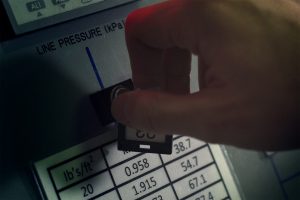The Hidden Stories Behind Modern Transportation Design
Modern transportation design has come a long way since the horse and buggy. From sleek cars to high-speed trains, the vehicles we use today are a testament to human ingenuity and the constant pursuit of progress. But behind the shiny exteriors and practical features lies a story that often goes untold – the hidden stories behind modern transportation design. These stories not only reveal the inspiration and hard work behind the creation of these vehicles, but also shed light on the social and cultural influences of the time. Let’s take a closer look at the hidden stories that have shaped and continue to shape the way we get from point A to point B.
The Rise of the Automobile: Ford and the Assembly Line
The history of modern transportation design is incomplete without mentioning the impact of Henry Ford and his revolutionary assembly line. In the early 20th century, Ford introduced the concept of mass production, drastically reducing the time and cost of producing cars. This led to the affordability and accessibility of automobiles for the average person, ultimately changing the landscape of transportation forever.
The Design of the Model T
But it wasn’t just the assembly line that made Ford’s Model T a success. Ford also employed sound design principles in creating the iconic car. The design was simple, functional, and easy to repair, making it ideal for mass production. Its distinct black color was also a result of Ford’s quest for efficiency, as black paint dried faster than other colors. These design choices not only made the Model T affordable, but also durable and practical – qualities that continue to be highly valued in modern cars.
The Jet Age and Streamlining
In the 1950s, a new era of transportation design began with the introduction of the jet engine. This innovation brought faster and more efficient modes of travel, and it also influenced transportation design in a major way. Streamlining, a concept of designing vehicles to reduce air resistance and increase speed, became a popular trend in the design of cars, trains, and even airplanes. The sleek, aerodynamic shapes and bold colors of this era reflected the idea of progress and the promise of speed.
The Influence of Science Fiction
Another factor that played a role in the design of transportation during this time was science fiction. Books and films like “2001: A Space Odyssey” and “Star Trek” inspired designers to create futuristic vehicles that seemed to defy the laws of physics. This often resulted in bold, unconventional designs that pushed the boundaries of traditional vehicle design. While some of these designs may seem impractical or far-fetched, they provided a glimpse into the possibilities of the future and continue to inspire transportation design today.
The Environmental Movement and Sustainable Design
In recent years, the impact of transportation on the environment has become a growing concern. As a result, sustainable design practices have gained importance in transportation design. This includes the use of renewable materials, aerodynamic designs, and alternative fuel sources. Electric cars, hybrid engines, and even solar-powered vehicles are now part of the transportation landscape, reflecting a shift towards more eco-friendly options.
Designing for the Future
As technology continues to advance at a rapid pace, the future of transportation design is both exciting and challenging. Autonomous vehicles, hyperloop trains, and even flying cars are just some of the ideas being explored by designers today. But in addition to the practical considerations of speed and efficiency, designers are also faced with the task of creating vehicles that are not only functional, but also aesthetically pleasing and in line with society’s values and aspirations.
The hidden stories behind modern transportation design are a testament to the ever-evolving nature of human innovation and the impact of cultural, social, and environmental factors on the design process. From the assembly line to science fiction, from sustainability to the future, these stories have shaped and will continue to shape the way we move and experience the world around us.











